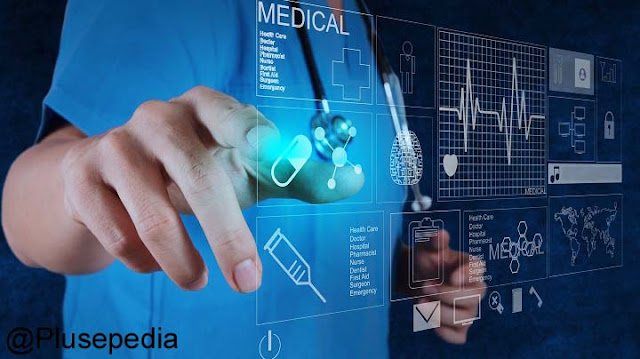Improvements in scientific technologies are giving sufferers new desire for better pleasant and more unbiased lives. From repairing broken organs to 3D printed bones and self-driving wheelchairs, those six technologies could make an actual distinction in the lives of many patients.
1. Tissue patches which can regenerate broken organs
Engineers at the University of Toronto have advanced a stamp-sized tissue patch that may be used to restore damaged organs without the need for surgery.
The Patch's shape-reminiscence capability way that it returns to its authentic nation when exposed to the right temperature. As soon as the piece inserted – the usage of only a dull needle – it expands and proceeds to repair and replace broken tissue.
The product of biodegradable and biocompatible polymer, the patch will finally dissolve and go away behind the new tissue.
The patch to start with advanced as an opportunity to open-heart surgical operation for heart attack patients. In the future, it may also be used to repair broken livers and different organs.
The patch to start with advanced as an opportunity to open-heart surgical operation for heart attack patients. In the future, it may also be used to repair broken livers and different organs.
2. Cochlear auditory implants that could help the deaf listen
Cochlear, a maker of auditory implants, has unveiled its new nucleus seven sound processor, which is the primary implant sound processor developed for the iPhone.
Acoustic implant devices are seeing some significant tendencies, and new advancements are on the way. The approaching international symposium on objective measures in auditory implants in Tel Aviv will explore the traits in implants, genetics, and robotics which are helping human beings pay attention once more – or for the primary time.
The device comes in the form of a chip, that located on the floor of the pores and skin. The usage of tissue nano transfection, the tool inputs a genetic code into the pores and skin cells which rework the cells into the type of cell needed to deal with the damage or situation.
The device not implanted, and the outcomes persist after the first treatment.
In only one week, the tool can help regenerate blood vessels. After a few weeks, the treatment can assist shop a leg – or arm.
3. 3-D bone implants for short, less expensive reconstructive surgical operation
3D printing technology brings about a whole new stage of opportunities inside the scientific field – inclusive of printed bone implants.
Based on actual scans of the patient's bone structure, those customized implants can assist people with excessive injury or disorder.
Surgeons could make custom gear for the patient's precise frame, and share useful designs with doctors from around the sector.
4. A tool that fixes broken tissue with simply one press
Researchers at Ohio state university's Wexner scientific center have discovered a way to repair tissue with a simple touch.The device comes in the form of a chip, that located on the floor of the pores and skin. The usage of tissue nano transfection, the tool inputs a genetic code into the pores and skin cells which rework the cells into the type of cell needed to deal with the damage or situation.
The device not implanted, and the outcomes persist after the first treatment.
In only one week, the tool can help regenerate blood vessels. After a few weeks, the treatment can assist shop a leg – or arm.
5. Crispy skin grafts which could update insulin photographs
Within the destiny, people with diabetes might not even want insulin pictures. Crisp, a gene editing device, has been used to create pores and skin grafts that trigger the release of insulin.
The concept has already successfully examined in mice, which confirmed a reversed resistance to insulin.
To create the graft, researchers altered the gene that encodes the gap-1 (glucagon-like peptide-1), that is what triggers the insulin launch and helps the frame take away excess glucose. In this situation, the gene is altered to make its ultimate effects longer than ordinary.
At the same time as exclusive remedies will make an effort to broaden, researchers say skin tissue may be very smooth to grow in a lab the usage of human stem cells.
If the remedy is a fulfillment, researchers say it can be used to deal with different conditions in the future, which includes hemophilia.
The researchers' findings published in the cellular stem cell.
If the remedy is a fulfillment, researchers say it can be used to deal with different conditions in the future, which includes hemophilia.
The researchers' findings published in the cellular stem cell.
6. A self-riding wheelchair to get where you need to go
At the same time as carmakers are busy seeking to get self-reliant cars and vans on the street, researchers are using this technology in other approaches to assist improve mobility: self-riding wheelchairs.
Researchers are operating on an autonomous wheelchair with the intention to cross wherever you need with the touch of a button. The chair gets rid of the want to have a person push you around.
To get to your favored destination, the chair will calculate a course, after which execute that way.
Equipped with sensors, the chair can come across humans and other unmapped limitations, so customers get to their destinations competently. It may make its manner through slender areas and even make 360-diploma turns.
While designed to be used in hospitals, those self-using wheelchairs may also quickly determined in retail shops and airports internationally.
To get to your favored destination, the chair will calculate a course, after which execute that way.
Equipped with sensors, the chair can come across humans and other unmapped limitations, so customers get to their destinations competently. It may make its manner through slender areas and even make 360-diploma turns.
While designed to be used in hospitals, those self-using wheelchairs may also quickly determined in retail shops and airports internationally.


No comments:
Post a Comment